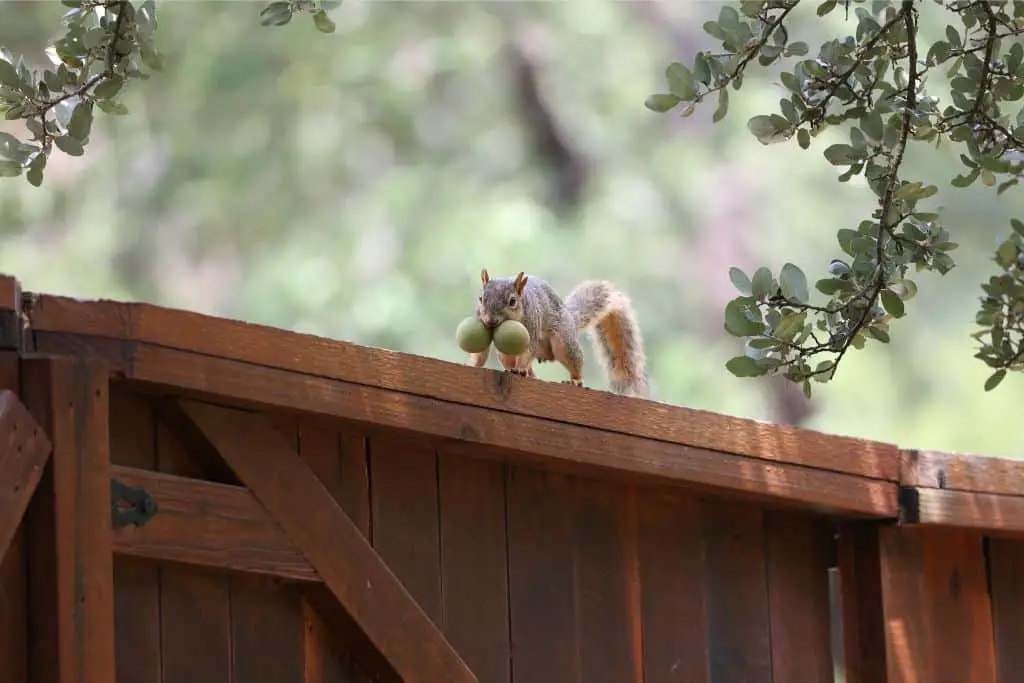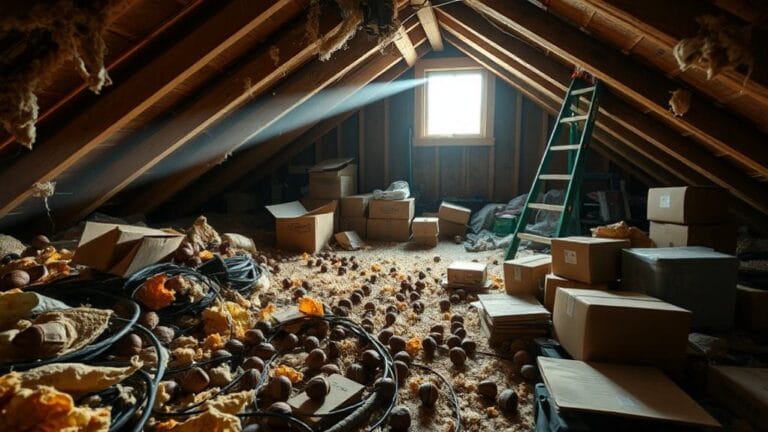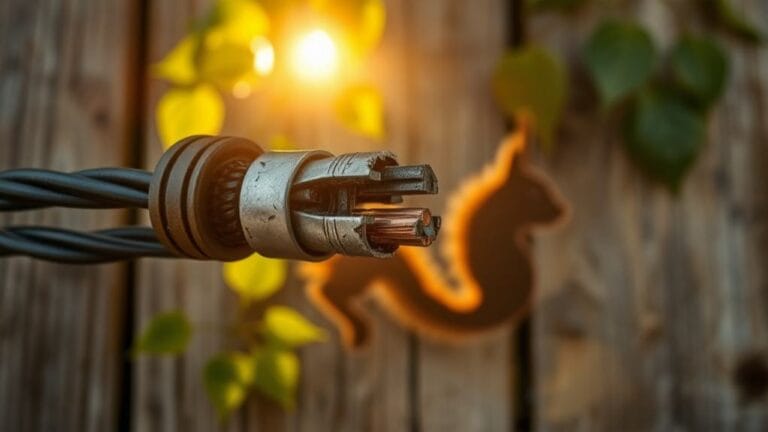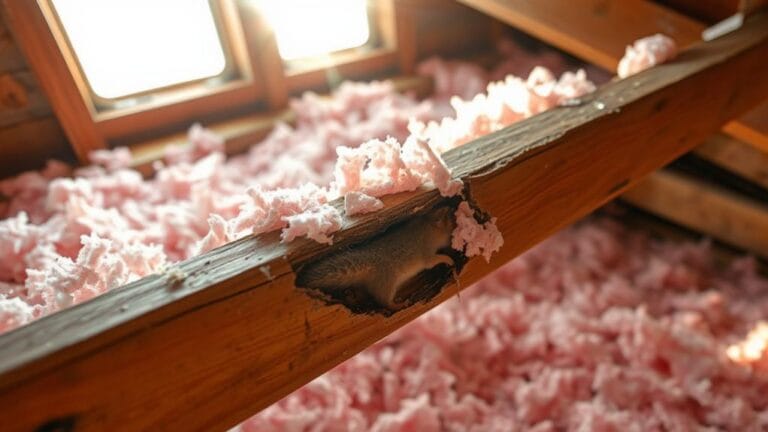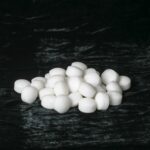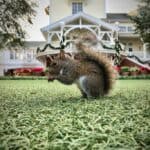Squirrels may be cute and fuzzy creatures outside of nature, but they can become a significant nuisance when they invade your home.
Not only can they cause damage to your property, but they can also create a mess and spread diseases. It’s essential to identify the signs of squirrels in your house so that you can take appropriate action to deal with the problem.
In this article, we will discuss six common signs indicating squirrels have made their way into your home and provide tips on identifying and effectively dealing with this issue.
By being aware of these signs and taking prompt action, you can ensure the safety and comfort of your home.
1) Strange Noises
Table of Contents
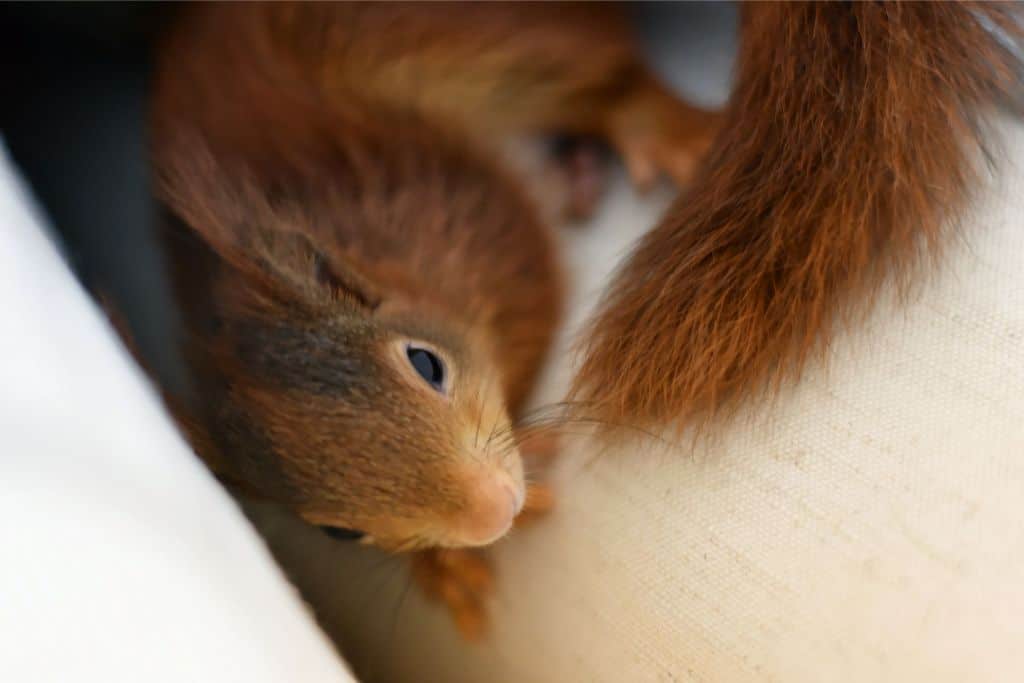
The first sign of a squirrel infestation in your home is often the strange noises they make. These sounds can be pretty distinctive, and knowing what to listen for can help you identify the problem quickly.
Squirrels are not the quietest of creatures. Their activities often result in distinct sounds that alert homeowners to their presence. Here are some everyday noises that squirrels make:
- Scratching Sounds: Squirrels have sharp claws for climbing and digging. When they move around in your home, you may hear scratching sounds on the walls, ceilings, or inside the attic.
- Scampering or Running Sounds: Squirrels are agile creatures that move quickly. Their rapid movement can be heard as scampering or running noises in your home.
- Chewing Sounds: Squirrels have strong teeth that never stop growing, which they maintain by chewing on hard materials like wood. If you hear gnawing or chewing sounds, it could be a sign of squirrels.
- Squeaking Noises: Squirrels communicate with each other using high-pitched squeaks. If you hear these sounds, it could indicate a squirrel infestation.
- Rustling Sounds: Squirrels build nests using materials like leaves and twigs, which can create rustling noises.
- Thumping Sounds: When squirrels jump or fall, they can create thumping sounds.
These auditory signs should alert homeowners to potential squirrel activity within their homes. Acting promptly is essential, as squirrels can cause significant damage if left unchecked.
2) Water Damage
Squirrels, those cute little creatures often seen frolicking in the park, can become a real nuisance when they decide to reside in your home. One of the most significant signs of their presence is water damage.
Squirrels are notorious for their love of gnawing; unfortunately, this extends to your home’s infrastructure. They can chew through almost anything, including wooden beams, insulation, electrical wires, and pipes. When a squirrel gnaws through a pipe, it can lead to leaks inside walls and ceilings.
Water stains or damp patches on your walls or ceiling are often a telltale of a leak. If you notice these signs and other indications of a squirrel infestation, such as scratching noises, it’s time to investigate further.
Not only does this cause structural damage to your home, but it also poses potential health risks. Damp environments are ideal breeding grounds for mold and mildew, which can lead to respiratory problems if left unchecked.
Here’s a quick summary in table form:
| Sign | Explanation |
|---|---|
| Water Damage | Squirrels can cause water damage by gnawing through pipes, leading to leaks. Signs include water stains or damp patches on walls or ceilings. This damages your home’s structure and creates a conducive mold and mildew growth environment. |
Don’t underestimate the havoc these small creatures can wreak on your home. If you suspect squirrels have moved in, it’s best to seek professional help immediately.
3) Increased Squirrel Population in the Area
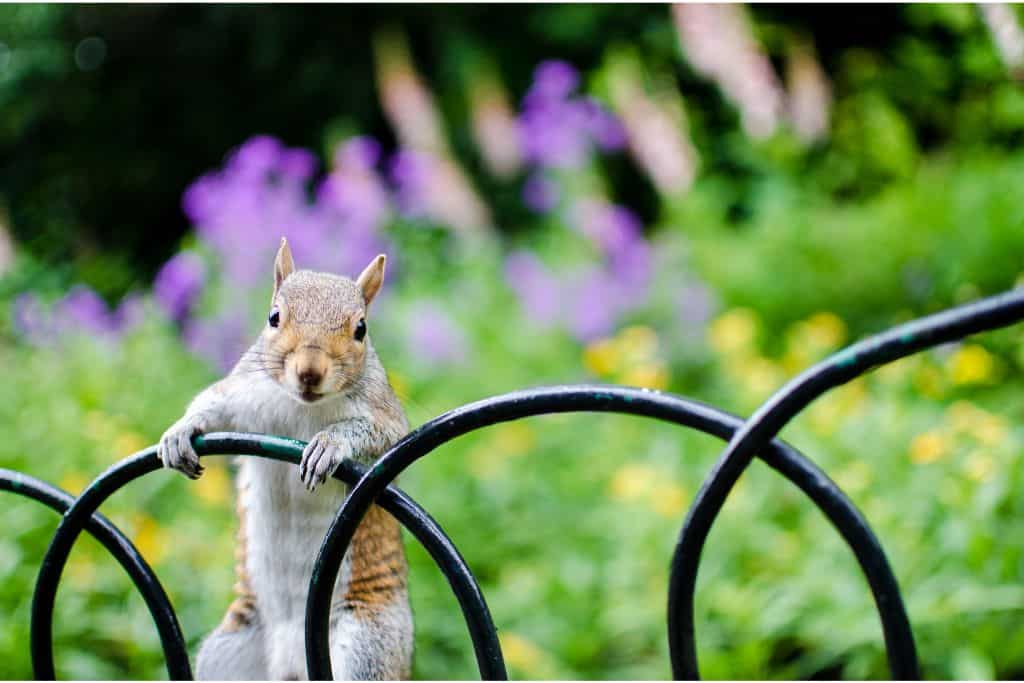
Homeowners often deal with various wildlife, and squirrels are no exception. These furry creatures are adorable in their natural habitat but can become a nuisance when they invade your home. An increased squirrel population in your area indicates that you might have these unwelcome guests in your house.
Spotting More Squirrels: The most obvious sign of a higher squirrel population is seeing more squirrels around your property. If you notice an increase in their activities, especially during the day, their numbers are likely growing.
Noise: Squirrels are known for their loud and persistent noises. Squirrels may have made themselves home if you hear unusual sounds from your attic or walls.
Droppings: Squirrel droppings are another telltale sign. They are usually small, round, and dark brown. If you start finding these around your property, it’s time to investigate further.
Damaged Plants: Squirrels love to dig and chew. If you notice damage to your plants or see small holes in your yard, it could be the work of squirrels.
Remember, early detection is key to preventing a full-blown squirrel infestation. If you notice any of these signs, it’s advisable to contact a professional pest control service immediately.
4) Scratching in Attic or Walls
Scratching sounds in the attic or walls are a common sign of squirrel infestation. The sound is usually a rapid, scampering noise that can be heard during the day, especially in the early morning or dusk. This is because squirrels are diurnal creatures, meaning they are most active during daylight hours.
When squirrels find themselves trapped in the attic or walls, they often make scratching sounds as they try to escape. These sounds can be described as a light, fast-paced scurrying noise. This differs from the slower, heavier noise that rats or mice might make.
Squirrels may also gnaw on wooden structures, making a distinct chewing sound. This behavior helps them maintain their sharp teeth and creates an exit route. Acting quickly is crucial to prevent further damage.
Remember that these signs alone may not definitively indicate a squirrel infestation. Other signs, such as droppings, footprints, and damage to your property, can provide further evidence of their presence. Remember, it’s always best to consult a professional pest control service if you suspect an infestation.
5) Teeth Marks and Damage
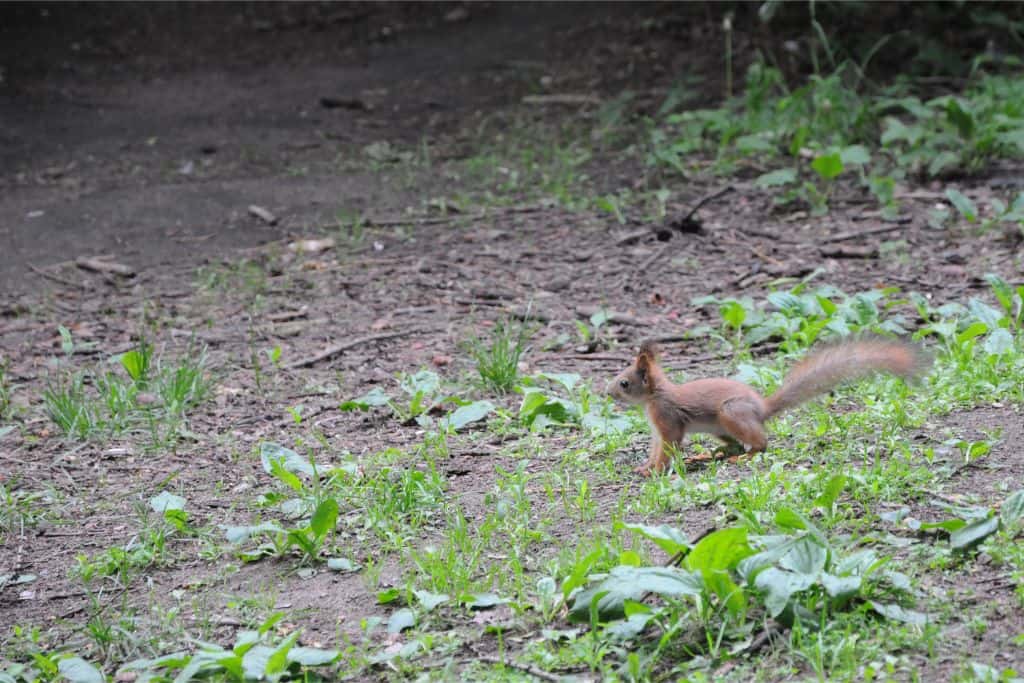
If you’ve noticed odd signs around your house, you might have a squirrel problem. One of the most telling signs is the presence of teeth marks and damage.
Squirrels, like other rodents, have incisors that never stop growing. They gnaw on various objects to keep their teeth in check. If squirrels have invaded your home, they might leave behind a trail of destruction – from gnawed furniture to chewed electrical wires.
1. Wood Damage: Squirrels love to gnaw on wood. If you notice unusual scratches or bite marks on your wooden furniture, deck, or attic beams, it’s a clear sign of squirrel presence.
2. Electrical Wire Damage: Squirrels are notorious for chewing through electrical wires, which can be a severe fire hazard. If you find frayed wires in your attic or basement, squirrels might be the culprits.
3. Insulation Damage: Squirrels often tear up insulation to build their nests. If you find shredded insulation in your attic, squirrels are likely nesting there.
Remember, early detection is critical to preventing extensive damage. If you notice these signs, consider contacting a professional pest control service immediately.
6) Strong Odors
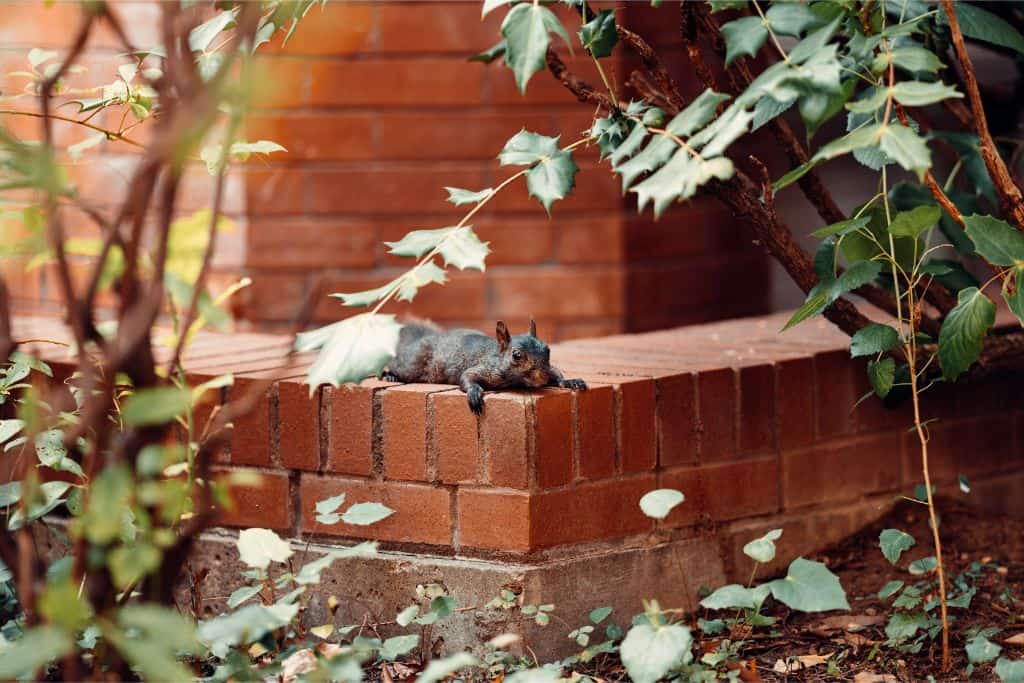
One of the telltale signs of a squirrel infestation is the presence of solid and unpleasant odors in your home. These odors can be quite distinct and are typically a result of the squirrels’ activities within your living space.
When squirrels reside in your home, they bring a host of smells that can permeate your living space. These odors are often a combination of squirrel droppings, urine, and even the scent of decaying food that they may have brought into your home.
Squirrel Droppings: Squirrels are not tidy creatures. They often leave their droppings and urine scattered around their nesting area. This waste material can produce a strong, musky odor that is hard to ignore.
Decaying Food: Squirrels are known to hoard food. If they’ve been in your house for some time, chances are they’ve stashed away some food somewhere. Over time, this food can decay and produce a foul smell.
Decaying Squirrels: In some unfortunate cases, squirrels may die within the confines of your home. The smell of a decaying squirrel is particularly pungent and can quickly fill your home with an unbearable stench.
These strong odors are more than just a nuisance; they indicate that you may have an unwelcome guest in your home. Therefore, you must promptly investigate and address the issue if you notice any unusual smells in your house.
7) Squirrel Droppings
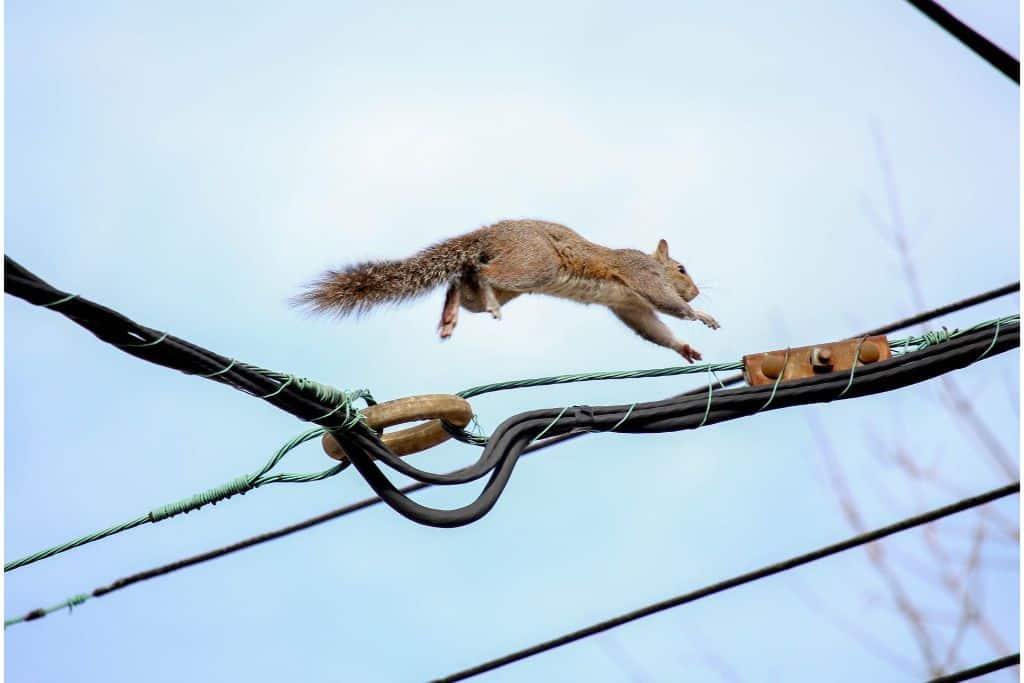
Unwanted house guests, especially furry guests, can be a nuisance. One such pesky intruder is the squirrel. Among the telltale signs of a squirrel infestation, one of the most visible is their droppings.
Squirrel droppings are typically small, round, and dark brown or black. They are often found in clusters and may resemble large grains of rice. The size and shape can vary depending on the squirrel species, but generally, they are about 8mm long and 5mm in diameter.
These droppings inside your home indicate that squirrels have found their way in and made themselves comfortable. They will likely be located near entry points, such as gaps in the roof or walls, or around food sources like your kitchen or pantry.
Caution is advised when dealing with squirrel droppings, as they can carry diseases that are harmful to humans. Always wear gloves and a mask when cleaning up these droppings, and consider hiring a professional pest control service if the infestation is severe.
Here’s a quick recap:
| Sign | Description |
|---|---|
| Squirrel Droppings | – Small, round, dark brown or black pellets – Found in clusters near entry points or food sources – May carry diseases harmful to humans- Professional pest control service recommended for severe infestations |
Remember: Prevention is always better than cure. Regularly inspect your home for any signs of squirrels to avoid an infestation.
Conclusion
Identifying the presence of squirrels in your home is crucial to prevent potential damage and health risks. Here are six signs that may indicate you have these furry intruders:
1. Noises: Squirrels are most active during the day, so hearing noises in your attic or walls during this time could be a sign.
2. Droppings: Finding small, cylindrical droppings in your attic or around your property can indicate a squirrel infestation.
3. Nests: Squirrels build nests using leaves and other materials. Squirrels may be present if you spot any in your attic or trees near your house.
4. Damage: Signs of gnawing on wood, wires, or insulation can also indicate squirrels.
5. Food Debris: Squirrels often leave shells or other food debris behind. Finding these around your property can be a sign.
6. Sightings: Regularly seeing squirrels around your property, especially near your roof, could mean they have found a way into your home.

